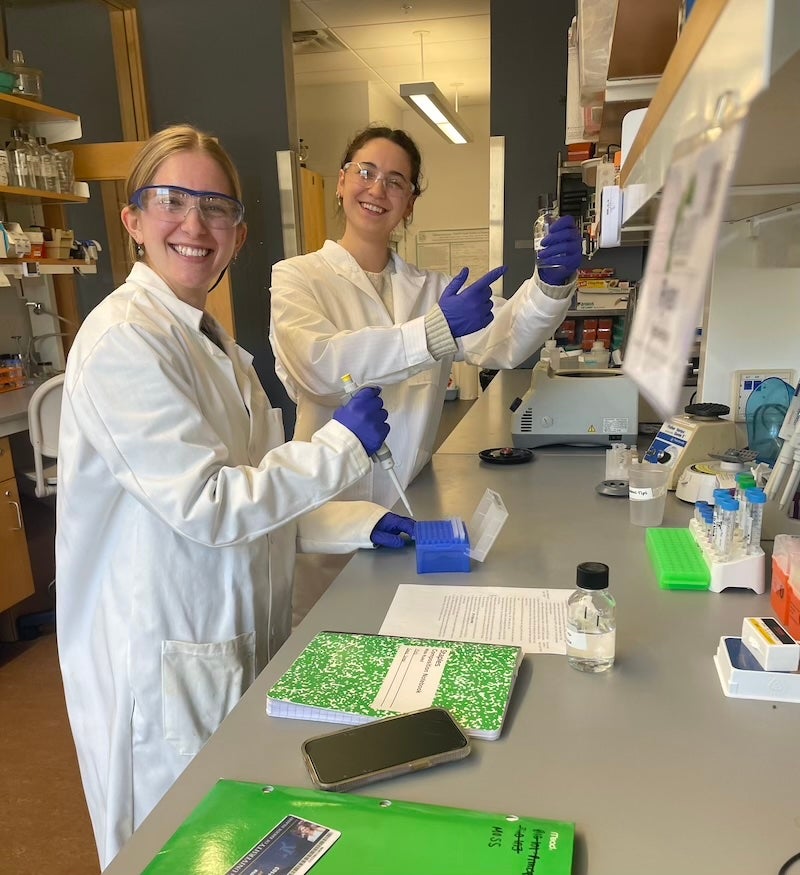Katherine Hlywa and Emma Zorner, both biological sciences majors, are spending the spring semester researching how gene mutations introduced to moss influence cell wall growth thanks to an undergraduate research grant from URI’s Office of Undergraduate Research and Innovation.
Their work, titled “Immunolabeling in Physcomitrium patens,” is a continuation of previous projects conducted under the supervision of Professor Alison Roberts in her lab. Working independently from each other last year, the students both genetically modified moss to mutate certain genes. Making genes of choice non-functional enabled them to study their roles in moss filament tip growth because the way the cell wall was constructed varied in the mutants as compared to the wild type.
“The inspiration for completing this new phase of research is to see exactly how the construction of the mutants are different from the wild type plant by tagging specific polysaccharides in the wall with fluorescent antibodies in order to see them under a microscope,” Hlywa explains. “I genetically modified Physcomitrum patens to study the CSLD3 gene, and [Zorner] modified her line of the same organism to study different genes, EXT1 and XTH1, which serve different functions in the construction of the cell wall. Now we are coming together to study both of our lines using the antibodies won with our grant, and look at them together.”
“So far we know through genotyping that both of our mutation experiments were successful, and the mutated line constructs the cell wall in a different way without the protein of focus,” Hlywa adds. “Now the immunolabeling experiment is to get a closer look at how the structure of the wall varies between the mutant and the wild type.”
Zorner notes that her interests in both cell and molecular biology and microscopy drew her to this particular research. “Interpreting the results of the immunolabeling and learning how certain polysaccharides contribute to cell wall changes in mutant lines will be very cell and molecular biology based,” she says. “The microscopy comes into play as it is how we will visualize our results of fluorescently labeled polysaccharides within each cell.”
“I usually learn the most when results do not turn out as expected,” she adds. “Every aspect of research is new and exciting–you are seeking to find answers to questions that no one knows the answer to yet.”
The students note that a deeper understanding of this scientific inquiry is not the only benefit to this research process–and to being awarded a grant. “Being able to carry out this project will help me further develop my research skills and microscopy techniques, which will be extremely beneficial to go into veterinary medicine with,” Zorner says, adding that learning how to write the grant proposal to apply for this award was “in and of itself a very important and educational experience.”
“Receiving this award is important to me because it shows that the work I conducted last year, as well as my future studies on the topic, are meaningful and important to the field,” Hlywa says. “It is rewarding to have professionals validate that the research [Zorner] and I have been working on is significant work that deserves funding to be continued.”
“Working in the Roberts lab has made my experience at URI so much more meaningful and worthwhile,” she adds. “It has helped me discover a passion for biological research that I had no idea existed until I started.”

